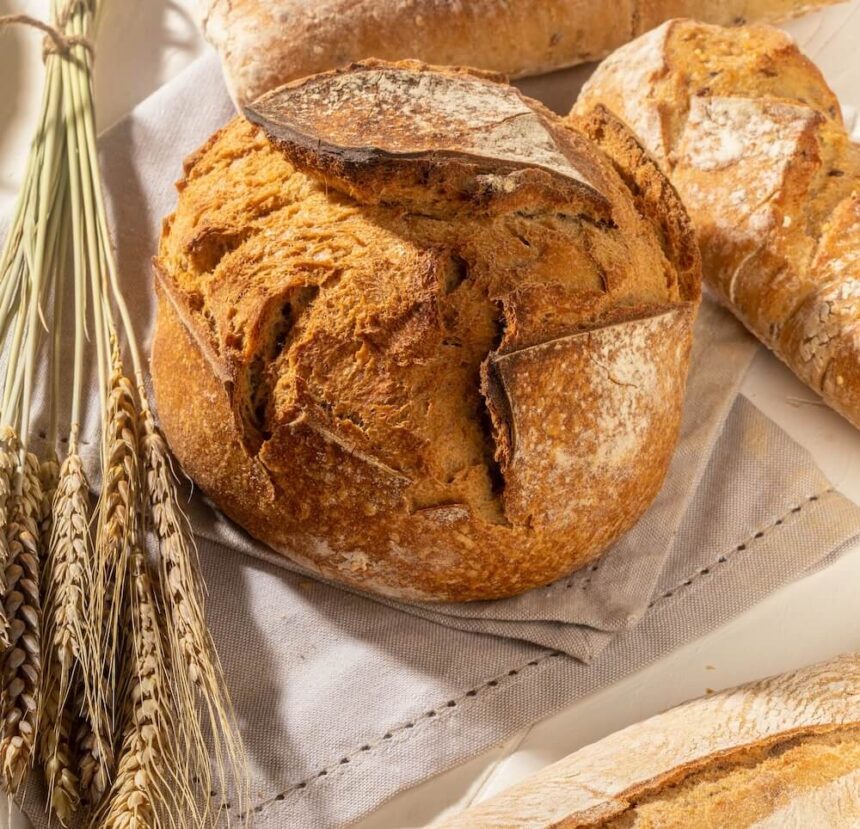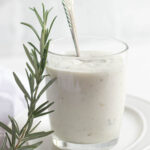More and more people are following the gluten free diet. But is it just another diet trend, or should you consider going gluten-free, too?
Where does gluten come from, and what does gluten do to your body? If gluten is the culprit in your diet, we’ll give you some great suggestions on implementing gluten-free options into your current lifestyle. Let’s get started!
What Is Gluten?
There’s lots of talk about gluten, but few of us actually know what it is. Gluten is a protein, and like all proteins, it’s made up of amino acids. In fact, gluten makes up to 80 percent of the amino acids within grains.
Gluten acts like a glue, helping to hold foods together. It’s what gives certain foods their shape.
So, when it comes to baking, gluten is an essential ingredient. When you add water to flour, the gluten expands and creates an intricate network of strands, which gives the dough its elasticity and shape.
As you can see, even though gluten has been demonized in recent years, it’s not inherently bad. But like any other allergen, it can be pretty dangerous for those with gluten intolerance.
Foods That Contain Gluten
Gluten is an age-old and naturally occurring component in grains. Some of the most common foods containing gluten include the following:
- Wheat
- Wheat-berries
- Durum
- Spelt
- Farro
- Graham
- Einkorn
- Kamut
- Rye
- Barley
- Malt
- Brewer’s yeast
From the looks of this list, you may think that gluten is just a natural component of anything made with grains and their respective flours. For example, bread, pasta, baked goods, crackers, cereals, and everything else we make with flour.
But the truth is, gluten shows up in lots of different products. Sometimes, gluten is present in places you’d least expect it. You might be shocked to learn where manufacturers use gluten.
For example, foods with gluten may include products like processed deli meats, candy, soups, vegan meat substitutes, as well as seasoning mixes and spices.
But it doesn’t stop there. Gluten is also used in processed potato products like French fries and potato chips, dressings, marinades, sauces, and syrups. Gluten can even be found in vitamins, supplements, cosmetic products, and medications. As you can see, gluten isn’t just in grains!
If you’re not allergic, sensitive, or intolerant to gluten, these additions won’t pose a health problem to you. However, if you do struggle with gluten, you can easily see why it can be very challenging to live a gluten-free lifestyle.
But before you start to worry about gluten and it’s fixed place in the standard Western diet, let’s take a closer look at gluten and how people may respond to it.
Gluten Sensitivity vs Gluten Intolerance
People often use the terms “gluten sensitivity” and “gluten intolerance” interchangeably. But these words don’t mean the same thing when discussing gluten. Here’s why.
Allergy
When it comes to gluten, “allergy” and “intolerance” are interchangeable. A gluten intolerance is the same as a true allergy to gluten.
What are common ways that gluten allergies show up in the body? Here’s a basic breakdown of the most typical gluten intolerance symptoms:
- Gas
- Bloating
- Constipation
- Diarrhea
- Abdominal pain
- Headaches, including migraines
- Brain fog
- Inflammation, leading to joint and muscle pain
- Fatigue, especially after eating a meal with gluten in it
- Dermatologic issues
- Depression
- Anxiety
- ADD
- Mood swings
- Weight gain
- Iron deficiency
- Irritable Bowel Syndrome (IBS)
- Autoimmune disorders, such as Ulcerative colitis, Psoriasis, Celiac disease (more about that below)
- Hormone imbalances, such as PMS and PCOS (that’s right, all your struggles with PMS can be linked to gluten intolerance).
Sensitivity
According to research, approximately 18 million Americans are sensitive to gluten. Even though people with gluten sensitivity are separate from those with a true allergy, they often experience similar symptoms.
What sets a gluten sensitivity apart from a gluten allergy? People with gluten sensitivity don’t have the “same antibodies and intestinal damage as seen in celiac disease.”
Nonetheless, even if you’re “just” sensitive to gluten, you can still experience brain fog, headaches, joint and muscle pain, so some of the same symptoms of gluten intolerance may still show up.
Usually, the symptoms are less severe than those with a gluten allergy, but following a gluten free diet can also avoid symptoms brought on by gluten.
Celiac Disease
This is perhaps the most common gluten-related illness. However (and luckily!), it “only affects about 1% of the American population. That’s about 1 in every 133 individuals.
Unfortunately, there may be many more people who go undiagnosed. And since there are no pharmaceutical medications to heal this condition, the only effective way to live with Celiac disease is to eat completely gluten-free.
According to Beyond Celiac, these are the most common symptoms of celiac disease:
- Anemia
- Anxiety
- Bloating or gas
- Constipation
- Delayed growth
- Depression
- Diarrhea
- Discolored teeth
- Fatigue and tiredness
- Headaches or migraines
- Infertility
- Irritability
- Itchy skin rashes
- Joint pain
- Pale mouth sores
- Poor weight gain
- Thin bones
- Tingling and numbness
As you can see, many of the symptoms of gluten intolerance and celiac disease are the same. So, if you suspect that you have an allergy or autoimmune disorder to gluten, it’s essential to get it checked out.
If you do have an allergy, you can improve your health by avoiding it. Similarly, if you have celiac disease, gluten could be causing severe damage to your neurological, reproductive, or psychological system. Luckily, you can regain your health by following a gluten free diet.
How Do You Know If You Have a Gluten Allergy?
You may be experiencing some of the symptoms associated either with a gluten intolerance/allergy or gluten sensitivity, and you might not realize that you’re reacting to gluten.
Here’s how you can determine if gluten is bad for you.
Eliminate Gluten
According to Dr. Amy Myers, a New York Times Bestselling author who wrote the book The Autoimmune Solution: Prevent and Reverse the Full Spectrum of Inflammatory Symptoms and Diseases, encourages people to eliminate gluten completely to determine an intolerance. It can stay in your body for months, so the longer you abstain from gluten, the more effective this test will be.
A good place to start is to eliminate gluten for three weeks before reintroducing it into your system.
Blood Test
An easy blood test can help doctors determine if you have celiac disease by identifying too many antibodies in your blood. Your immune system will produce specific antibodies in response to the gluten your body is fighting against.
If this is something you’re interested in, simply contact your healthcare professional to set one up.
Gluten and Herbicides
If you live in the United States and struggle with gluten, you will want to keep reading. That’s because agricultural practices negatively affect the wheat quality you consume. In fact, it’s a standard practice to drench wheat crops with the herbicide Roundup.
This makes the wheat come to seed faster – producing a larger harvest. But it comes to seed faster because it’s actually dying. And it’s a toxic chemical called “glyphosate” that makes this possible.
From a business perspective, this makes sense, but this agricultural practice harms Americans and anyone else who consumes this wheat.
Glyphosate, which can be found in an herbicide like Roundup, disrupts the healthy bacteria in your gut, which is a big problem. That’s because gut bacteria support healthy digestion and keep the lining of the digestive tract intact. This can lead to symptoms associated with autoimmune diseases.
So, if you experience gluten issues, you should realize that the harvesting practices throughout the United States may be to blame.
Are Gluten Free Foods Healthier?
If you experience symptoms due to a gluten intolerance or sensitivity, you probably want to go on a gluten free diet – and for good reason! And there are plenty of gluten-free alternatives on the market today.
The problem is that even though they are free of gluten, they might not be so much better for you.
Many gluten-free alternatives are made up of high-glycemic carbohydrates such as potatoes, corn, and rice flours. What’s more, gums, such as xanthan, guar, and gum arabic can lead to gas and bloating, and if that’s something you were trying to avoid by going gluten-free, you might be back where you started with these additives.
Unfortunately, lots of gluten-free foods are highly processed, loaded with carbohydrates, preservatives, and additives. So, it’s worth asking yourself if you’re really much better off consuming large amounts of these in a healthy diet.
If you decide to follow a gluten free diet, it’s important to fill your meals with whole foods, instead of opting for heavily processed gluten free alternatives.
How to Eat Gluten Free?
You might not know how to eat gluten-free. After all, if gluten is found in so many foods, how can you eat the same way you used to?
The truth is, you might have to give up some things, but in doing so, you can make room for lots of healthy and delicious foods. Let’s take a look.
Introduce More Fruits
Grains and flours, and their products (like bread, pasta, baked goods, etc.) give us a nice dose of carbohydrates.
But you can also get a healthy serving of carbohydrates from fruits, too. So, don’t be afraid to include more locally sourced fruits into your meals.
Eat Lots of Vegetables and Healthy Proteins
Gluten-based products generally fill us up. And when you go without typical gluten products you might feel hungry for more. If that’s the case, don’t be afraid to add more vegetables to your plate.
What’s more, lean protein sources are both filling and satisfying, such as poultry and fish.
Avoid Sauces, Spice Mixes, Seasonings, Marinades and Dressings
You’ll remember that gluten is used in lots of processed foods, like all those listed above (and then some!).
So, unless the labeling clearly states that the product is gluten-free, don’t buy it! Instead, learn to make your own delicious homemade marinades, dressings, and sauces (or buy pure organic dressing that’s completely gluten-free).
There might be a learning curve at the beginning, but you’ll find that it’s easy to do, and what’s more, it will taste way better than anything you can buy on the store shelf.
Try Gluten-Free Alternatives
It’s true that some gluten-free alternatives, like bread, baked goods, pasta and crackers aren’t much of an improvement thanks to their empty carbohydrates, additives, and lack of nutritional value.
Nonetheless, there are good options out there. Just be sure to read the labels to determine if the product is ridden with lots of sugar, preservatives, additives, and high-carbohydrate grains. What’s more, check the calorie count, because sometimes these products are very high in sugar and fat, and therefore, in empty calories.
As you can see, gluten is a complex food issue. It’s a simple protein, but it can harm certain people. What’s more, harvesting practices in the US agricultural system can really make gluten a problem for some people.
Starting up a gluten free diet may not be easy, and you may find it hard to learn how to be gluten free, but opt for whole foods as much as possible and switch out your usual gluten-filled grains for gluten free alternatives. In the end, you’ll realize that a gluten free diet is almost the same as your previous diet that contained foods with gluten.








